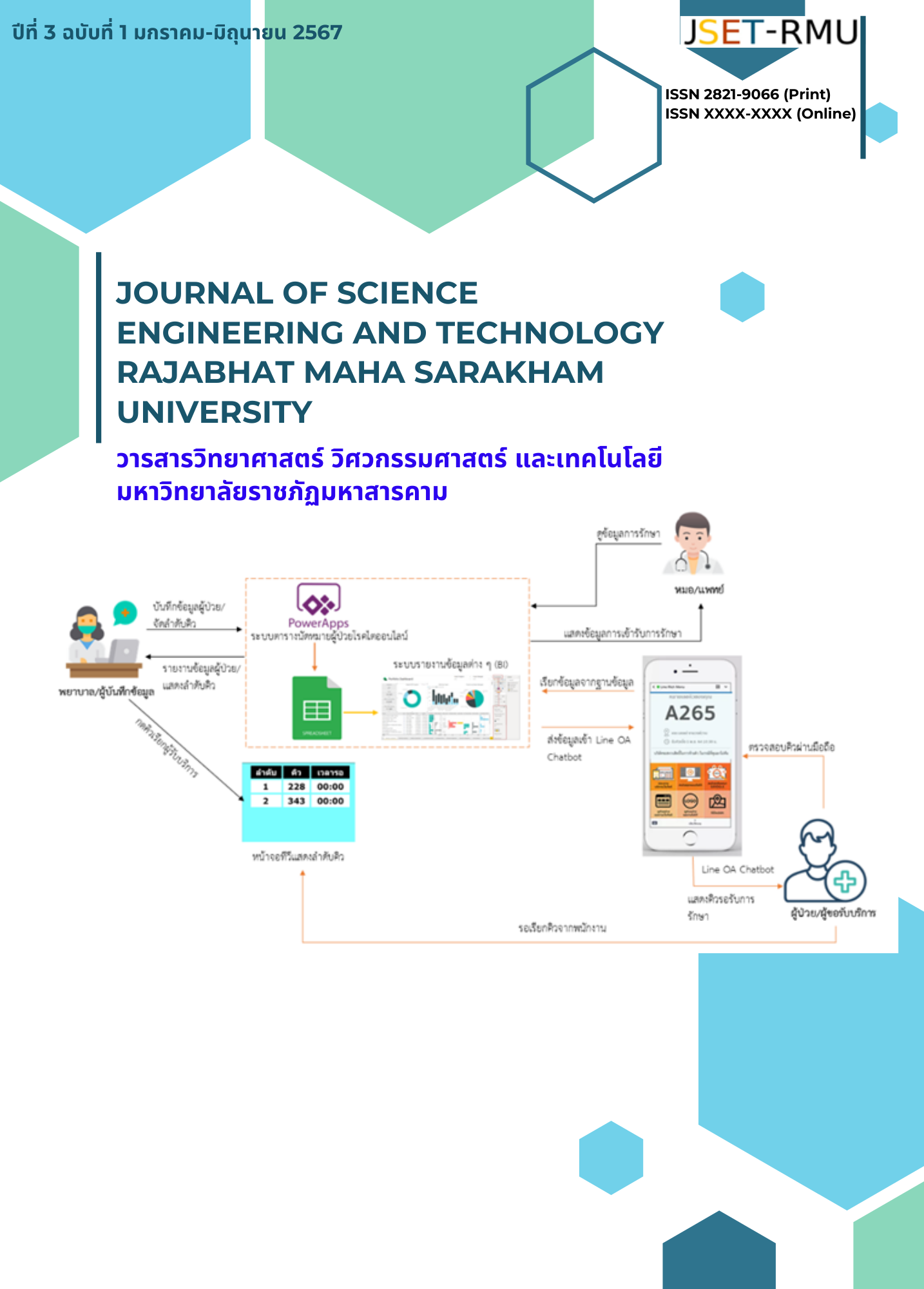การวิเคราะห์อภิมานประสิทธิผลของความเป็นจริงเสมือนในการศึกษาวิทยาศาสตร์
Main Article Content
บทคัดย่อ
เทคโนโลยี Virtual Reality (VR) เป็นกลยุทธ์ด้านนวัตกรรมที่ถูกนําไปใช้ในสถานศึกษาต่างๆ รวมถึงการศึกษาด้านวิทยาศาสตร์ เพื่อเพิ่มการมีส่วนร่วม และความเข้าใจของนักเรียนในบริบทของการศึกษาวิทยาศาสตร์ แนวทางความเป็นจริงเสมือนเกี่ยวข้องกับการปรับโครงสร้างกระบวนการสอนและการเรียนรู้แบบดั้งเดิม การศึกษาครั้งนี้มีวัตถุประสงค์เพื่อประเมินประสิทธิผลของ VR ในการศึกษาวิทยาศาสตร์ในด้านความรู้ ทักษะ และแรงจูงใจ โดยทำการวิเคราะห์อภิมานของประสิทธิผลของ VR ในการศึกษาวิทยาศาสตร์ การค้นหาวรรณกรรมอิเล็กทรอนิกส์โดยใช้ ERIC และดัชนี Scopus ตั้งแต่เดือนมกราคม 2018 ถึงพฤศจิกายน 2023 ได้ดําเนินงานเพื่อระบุการศึกษาที่รายงานประสิทธิภาพของ VR ในการศึกษาวิทยาศาสตร์เกี่ยวกับความรู้ ทักษะ และแรงจูงใจ ผู้ทบทวนอิสระสองคน ดําเนินงานคัดเลือกการศึกษา และการดึงข้อมูล คุณภาพของระเบียบวิธีวิจัยของการศึกษาที่เลือกถูกกําหนดค่าโดยใช้ Fail-Safe N for Publication Bias Assessment การศึกษาทั้งหมด 7 รายการ รวมถึงผู้เข้าร่วม 574 คน ได้รับการคัดเลือกสำหรับการวิเคราะห์ขั้นสุดท้าย เราพบว่า VR มีประสิทธิภาพมากกว่าเงื่อนไขการควบคุมในการปรับปรุงผลโดยรวม (ความแตกต่างของค่าเฉลี่ยมาตรฐาน [SMD] = 0.87, 95% CI 0.35-1.39, P<.001, I2=87.36%) ผลการศึกษานี้ชี้ให้เห็นว่า VR สามารถปรับปรุงการศึกษา วิทยาศาสตร์ความรู้ ทักษะ และแรงจูงใจโดยรวมได้อย่างมีประสิทธิภาพ การศึกษาอย่างเข้มงวดเพิ่มเติมที่มีขนาดตัวอย่างที่ใหญ่ขึ้นรับประกันเพื่อยืนยันผลลัพธ์เหล่านี้
Article Details

อนุญาตภายใต้เงื่อนไข Creative Commons Attribution-NonCommercial-NoDerivatives 4.0 International License.
เอกสารอ้างอิง
Al Amri, A. Y., Osman, M. E., & Al Musawi, A. S. (2020). The effectiveness of a 3D-virtual reality learning environment (3D-VRLE) on the Omani eighth grade students’ achievement and motivation towards physics learning. International Journal of Emerging Technologies in Learning (Online), 15(5), 4.
Artun, H., Durukan, A., & Temur, A. (2020). Effects of virtual reality enriched science laboratory activities on pre-service science teachers’ science process skills. Education and Information Technologies, 25(6), 5477-5498.
Caldwell, A. R. (2022). SimplyAgree: an R package and jamovi module for simplifying agreement and reliability analyses. Journal of Open Source Software, 7(71), 4148.
Cochran, W. G. (1954). The combination of estimates from different experiments. Biometrics, 10(1), 101-129.
Cumberbatch, I., Olatunji, J., & Robila, S. A. (2023). Using Extended Reality Technology in Science Education. In 2023 IEEE Long Island Systems, Applications and Technology Conference (LISAT) (pp. 1-6). IEEE.
Eyding, D., Lelgemann, M., Grouven, U., Härter, M., Kromp, M., Kaiser, T., Kerekes, M. F., Gerken, M., & Wieseler, B. (2010). Reboxetine for acute treatment of major depression: systematic review and meta-analysis of published and unpublished placebo and selective serotonin reuptake inhibitor controlled trials. BMJ, 341. https://doi: 10.1136/bmj.c4737
Ferrer, R. L. (1998). Graphical methods for detecting bias in meta-analysis. FAMILY MEDICINE-KANSAS CITY-, 30, 579-583.
Hemme, C. L., Carley, R., Norton, A., Ghumman, M., Nguyen, H., Ivone, R., UMenon, J., Shen, J., Bertin, M., King, R., Leibovitz, E., Bergstrom, R., & Cho, B. (2023). Developing virtual and augmented reality applications for science, technology, engineering and math education. BioTechniques, 75, 11-20. https://doi.org/10.2144/btn-2023-0029
Hibbard, P. B. (2023). Virtual reality for vision science. In: Maymon C, Wu Y, Grimshaw G (eds) Virtual reality in behavioural neuroscience: new insights and methods. Springe doi: 10.1007/7854_2023_416
Higgins, J. P., & Thompson, S. G. (2002). Quantifying heterogeneity in a meta‐analysis. Statistics in medicine, 21(11), 1539-1558.
Hite, R. (2022). Virtual reality: Flight of fancy or feasible? Ways to use virtual reality technologies to enhance students’ science learning. The American Biology Teacher, 84(2), 106-108.
Hsu, T. Y., & Chen, M. P. (2022). Drawing as reflection strategy for immersive virtual reality learning to enhance students’ science outcome. In Proceedings of 11th International Congress (pp. 313-322).
Huang, X., Huss, J., North, L., Williams, K., & Boyd-Devine, A. (2023). Cognitive and motivational benefits of a theory-based immersive virtual reality design in science learning. Computers and Education Open, 4, 100124.
Konecki, M., Konecki, M., & Vlahov, D. (2023). Using Virtual Reality in Education of Programming. In 2023 11th International Conference on Information and Education Technology (ICIET) (pp. 39-43). IEEE.
Kuit, V. K., & Osman, K. (2021). CHEMBOND3D e-module effectiveness in enhancing students’ knowledge of chemical bonding concept and visual-spatial skills. European Journal of Science and Mathematics Education, 9(4), 252-264.
Lamb, R. (2023). Virtual reality and science, technology, engineering, and mathematics education. International Encyclopedia of Education (Fourth Edition), 189-197. https://doi.org/10.1016/B978-0-12-818630-5.13075-1
Lill, C. M., Roehr, J. T., McQueen, M. B., Kavvoura, F. K., Bagade, S., Schjeide, B-M. M., Schjeide, L. M., Meissner, E., Zauft, U., Allen, N. C., Liu, T., Schilling, M., Anderson, K. J., Beecham, G., Berg, D., Biernacka, J. M., Brice, A., DeStefano, A. L., Do, C. B., ..., & Bertram, L. (2012). Comprehensive research synopsis and systematic meta-analyses in Parkinson's disease genetics: The PDGene database. PLoS genetics, 8(3), e1002548. Https://doi: 10.1371/journal.pgen.1002548
Lin, C. H., & Sumardani, D. (2023). Transitioning to virtual reality learning in 5E learning model: pedagogical practices for science learning. Interactive Learning Environments, 1-15.
Liou, W. K., & Chang, C. Y. (2018). Virtual reality classroom applied to science education. In 2018 23rd International Scientific-Professional Conference on Information Technology (IT) (pp. 1-4). IEEE.
Matovu, H., Ungu, D. A. K., Won, M., Tsai, C. C., Treagust, D. F., Mocerino, M., & Tasker, R. (2023). Immersive virtual reality for science learning: Design, implementation, and evaluation. Studies in Science Education, 1-40.
Moher, D., Liberati, A., Tetzlaff, J., Altman, D. G., & Prisma Group. (2010). Preferred reporting items for systematic reviews and meta-analyses: the PRISMA statement. International journal of surgery, 8(5), 336-341.
Mystakidis, S., Besharat, J., Papantzikos, G., Christopoulos, A., Stylios, C., Agorgianitis, S., & Tselentis, D. (2022). Design, development, and evaluation of a virtual reality serious game for school fire preparedness training. Education Sciences, 12(4), 281.
Petersen, G. B., Klingenberg, S., & Makransky, G. (2022). Pipetting in virtual reality can predict real-life pipetting performance. Technology, Mind, and Behavior, 3(3). https://doi.org/10.1037/tmb0000076
Rosenthal, R. (1979). "The 'file drawer problem' and tolerance for null results." Psychological Bulletin, 86(3), 638-641.
Sarıoğlu, S., & Girgin, S. (2020). THE effect of using virtual reality in 6th grade science course the cell topic on students’ academic achievements and attitudes towards the course. Journal of Turkish Science Education, 17(1), 109-125.
Song, F., Khan, K. S., Dinnes, J., & Sutton, A. J. (2002). Asymmetric funnel plots and publication bias in meta-analyses of diagnostic accuracy. International journal of epidemiology, 31(1), 88-95.
Tang, J. L., & Liu, J. L. (2000). Misleading funnel plot for detection of bias in meta-analysis. Journal of clinical epidemiology, 53(5), 477-484.
Viechtbauer, W. (2010). Meta-Analyse. Handbuch Statistik, Methoden und Evaluation. Hogrefe, Göttingen, 743-756.
Vola, E., Stoltz, R., & Schumpert, C. A. (2023). Impacts of Virtual Reality Experiences: Enhanced Undergraduate Student Performance and Engagement with use of 360-degree video. BioRxiv, 1-37.
https://doi.org/10.1101/2023.02.16.528835
Xie, T., Li, Y., & Tang, Y. (2023). Effects of Using Immersive Virtual Reality for Science Education on Learning Outcomes: A Randomized Controlled Pilot Study. IEEE Transactions on Learning Technologies, PP(99), 1-12. https://doi:10.1109/TLT.2023.3263587


